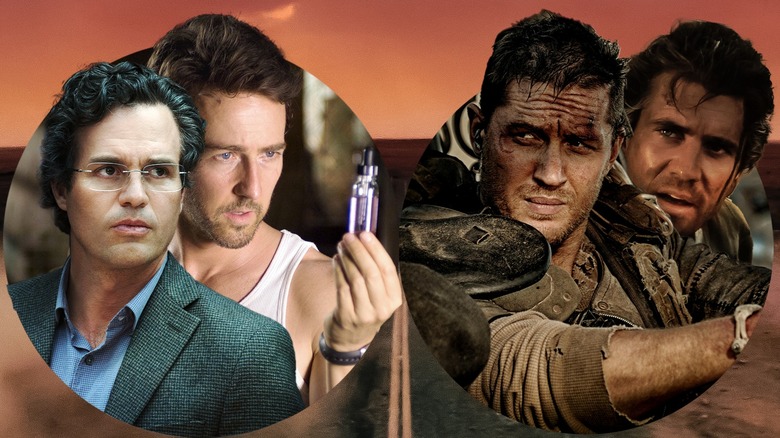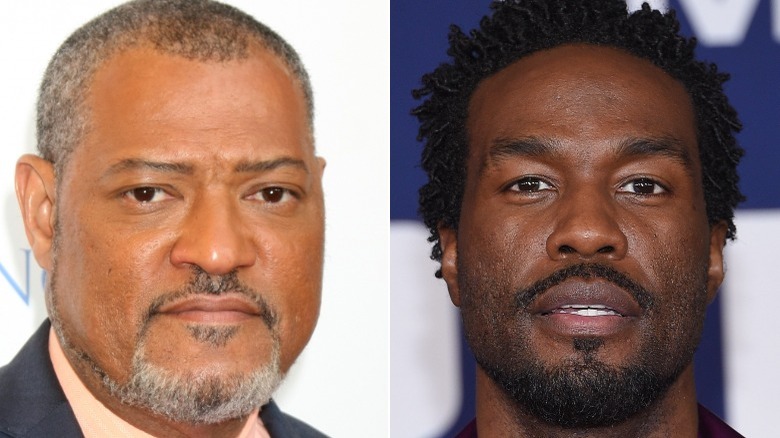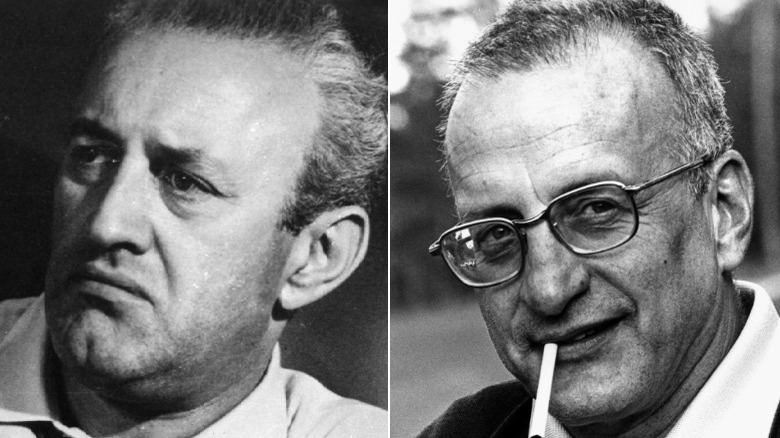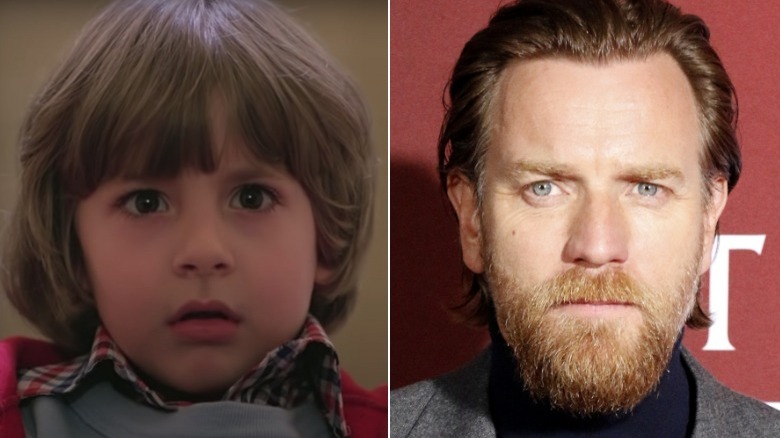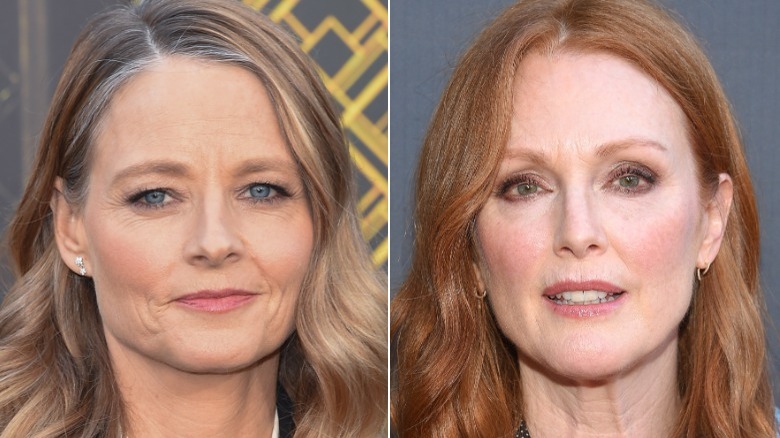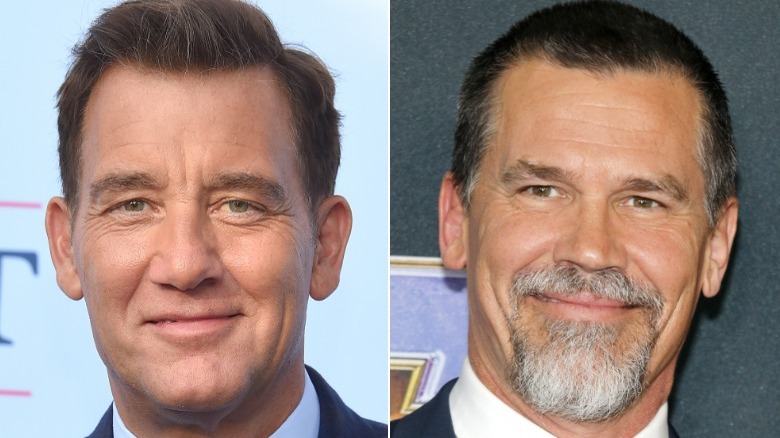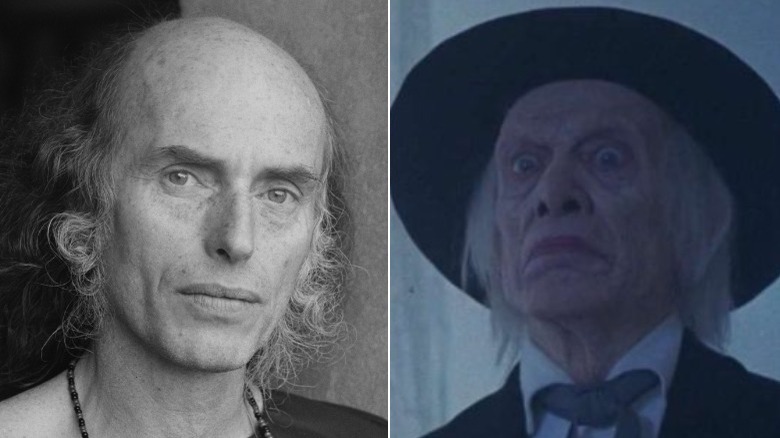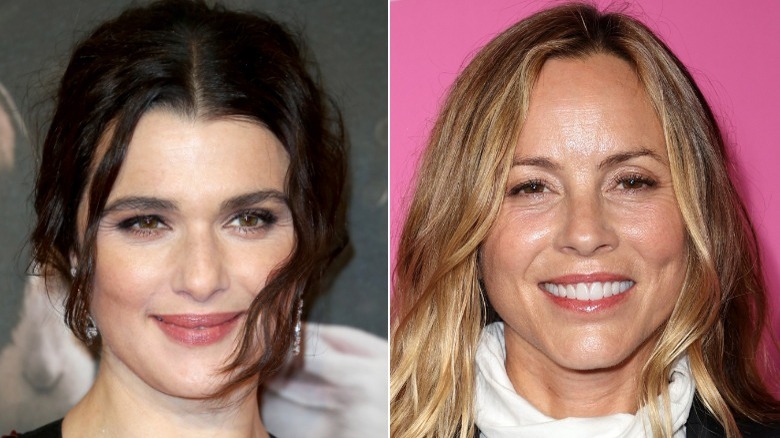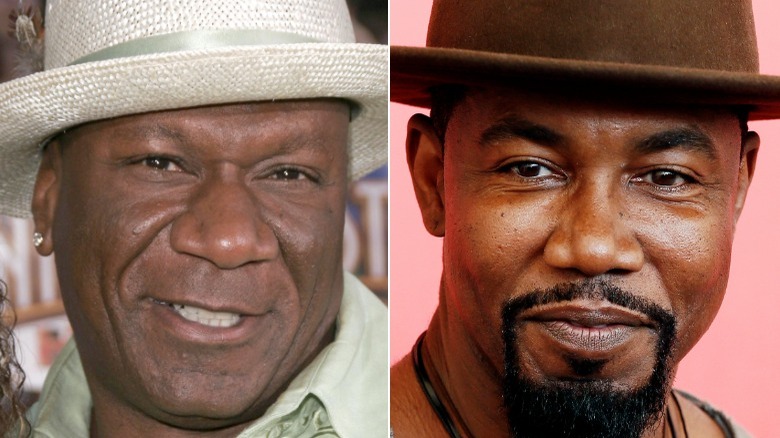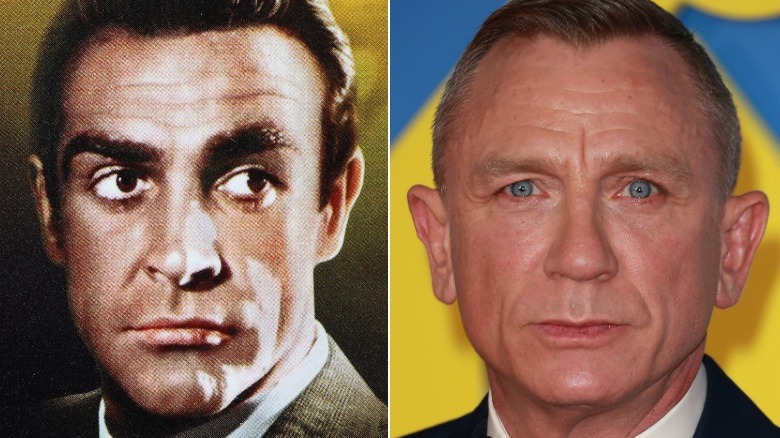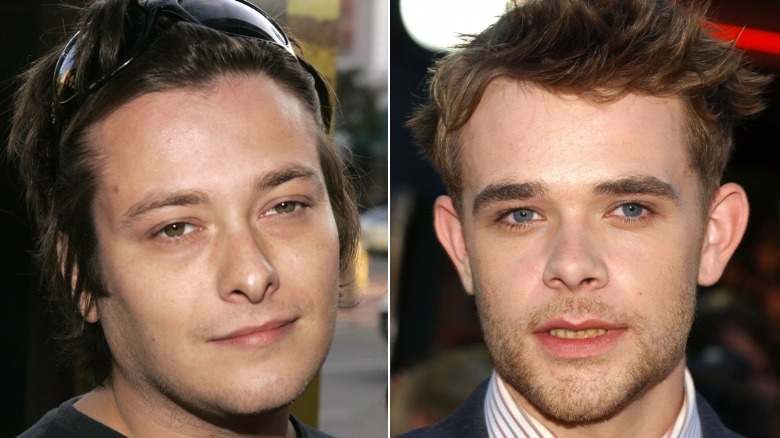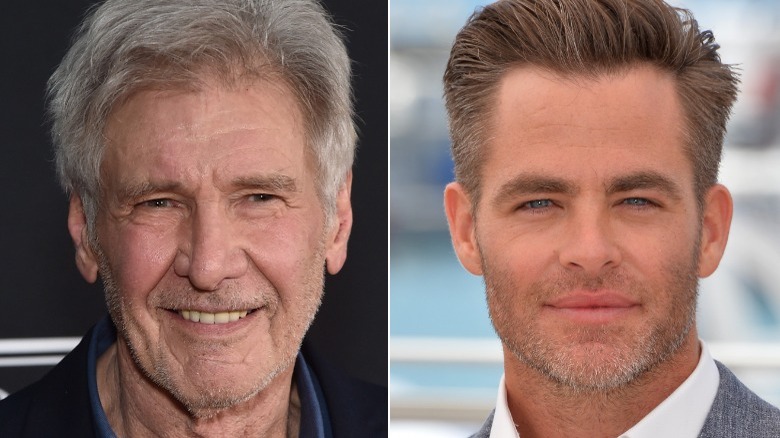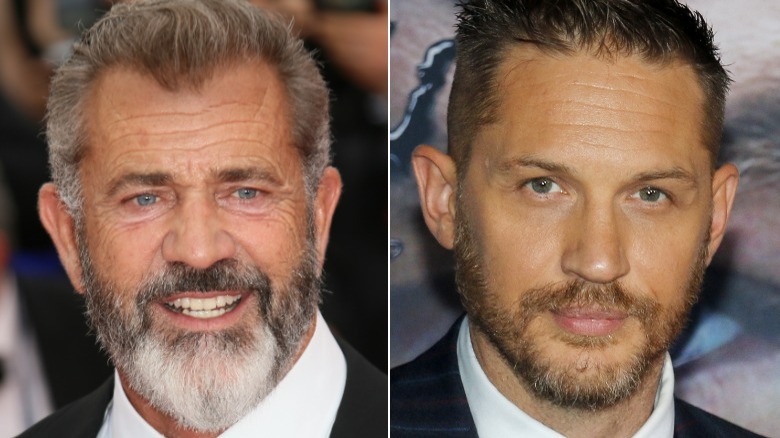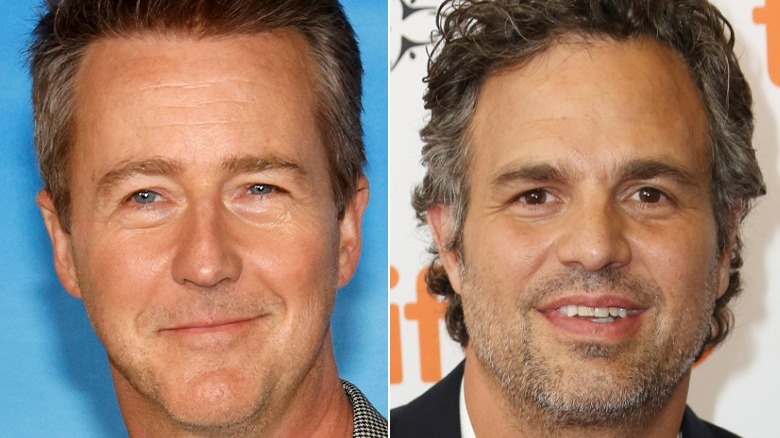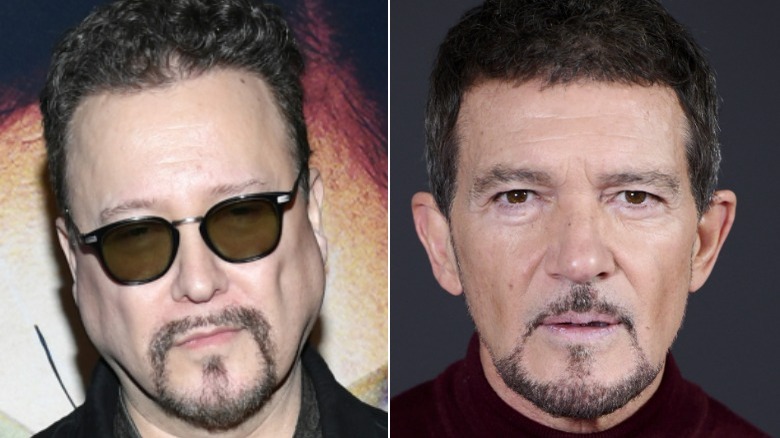Successful Movie Sequels Whose Lead Was Recast After The Original Movie
Recasting an actor rarely ever goes smoothly. Sometimes a replacement can slip by unnoticed if the role is minor, but swapping out a main character is guaranteed to raise eyebrows. Even though it almost always results in a messy situation, replacing actors still happens regularly in film and television. A high-profile example involves the recasting of Henry Cavill with Liam Hemsworth in future seasons of "The Witcher." It was speculated that Cavill's exit from the show was primarily to focus on continuing to play Superman, but the news broke shortly afterward that he was being recast in that role as well as part of the new DC game plan.
The choice to recast an actor can come down to myriad reasons. The change could be desired if the original actor's reputation hit the skids — such as with Christopher Plummer taking over Kevin Spacey's role in "All the Money in the World" — it might be a necessity after the original actor passes away, it could come down to scheduling conflicts, there might be behind-the-scenes conflicts at play, or the decision could be motivated by something else entirely. Below, we'll highlight 15 actors who were recast and break down why they didn't return for the sequel and cover who replaced them.
Laurence Fishburne in The Matrix Resurrections
Between the third and fourth films in "The Matrix" series — "The Matrix Revolutions" and "The Matrix Resurrections" — almost 20 years went by. Some of the main actors returned, like Keanu Reeves as Neo and Carrie-Anne Moss as Trinity, but plenty of others were recast.
Perhaps the largest absence in the 2021 sequel was Laurence Fishburne as Morpheus. Taking his place was the significantly younger Yahya Abdul-Mateen II, who was in his 30s at the time of filming, whereas Fishburne was in his 60s. During an interview with Vulture ahead of the release of "The Matrix Resurrections," Fishburne revealed that he was not invited to reprise the role. When speaking to People after the release, he said he didn't feel like he missed much and that the film "wasn't as good as I hoped it would be." That same year, Abdul-Mateen also took over as the lead of the "Candyman" requel, though he isn't playing the exact same character as past entries in the series.
The other biggest recasting in "The Matrix Resurrections" was the replacement of Hugo Weaving with Jonathan Groff as Smith. Weaving's absence was due to scheduling conflicts with his involvement in the National Theatre (per Slash Film). Weaving also revealed that he had some reservations about the script and wanted there to be a compelling creative reason to return to the series beyond a big payday.
Wesley Snipes in The Art of War III
The original "The Art of War" was released near the peak of Wesley Snipes' stardom in between the first two "Blade" movies. This 2000 action-thriller features Snipes as Shaw, a spy who works for the United Nations. The film was met with a terrible reception owing to things like chopping action scenes and plot issues as big as the writers seeming to not understand what the UN is. Regardless, multiple sequels followed for the direct-to-video market.
Snipes reprised the role in 2008 for "The Art of War II: Betrayal." The following year, a third movie completed the trilogy with "The Art of War III: Retribution," but Snipes was no longer involved. Taking over the Shaw character was Anthony Criss, a rapper better known by the stage name Treach, of Naughty by Nature.
Snipes's reason for not reprising the role a third time was the same reason why he dropped off the map entirely for a couple of years: because he was headed to prison. Shortly after the release of the second "The Art of War" movie, Snipes was "sentenced to three years in prison and fined $5m for wilful failure to file $15m worth of federal income tax returns," according to The Guardian. He was released in 2013 and gradually resumed his career with notable films like "The Expendables 3," "Chi-Raq," "Dolemite Is My Name," and "Coming 2 America."
Lee J. Cobb in The Exorcist 3
"The Exorcist" primarily centers around the possession of Regan MacNeil and the efforts of her mother and a priest to save her from the demon inhabiting her body. One of the major supporting characters is Lieutenant Kinderman. He enters the story while investigating a series of church desecrations and the death of film director Burke Dennings, who died at the hands of the possessed Reagan. Lee J. Cobb played Kinderman in the original film, but he had passed away by the time any of the sequels or prequels were made.
Kinderman did not appear in "Exorcist II: The Heretic," but he did return for "The Exorcist III." For the first time in the series — and for the second and final time overall in his career — William Peter Blatty, the author of the original novel, took charge of directing the film. Kinderman was a larger character in the original book, and Blatty repurposed some cut material and expanded the role for "The Exorcist III." George C. Scott took over the character and made the part his own. While he was a supporting character in the original film, Kinderman is the protagonist of this third outing.
Danny Lloyd in Doctor Sleep
Young Danny Lloyd played the pivotal role of Danny Torrance in Stanley Kubrick's classic horror film, "The Shining." Lloyd was just six-years-old at the time the film was made and before he had reached double-digits, he had already decided to retire from the movie business. Lloyd acted in only one other project, a small role in the made-for-TV bio-drama "Will: The Autobiography of G. Gordon Liddy." These days, he lives a quiet life and enjoys anonymity.
Nearly four decades later, "Doctor Sleep" was released as a follow-up, again adapting a novel by Stephen King. Having gone as far as to produce his own TV mini-series version of the original story, King famously hated Kubrick's adaptation. Nevertheless, "Doctor Sleep" pays reverential respect to Kubrick's adaptation, recreating many of the film's visuals. In the 2019 film, Danny is now an adult and is played by Ewan McGregor. Lloyd might not have reprised the character, but he is actually in the film. During the scene at the baseball field, Lloyd can be spotted in a small cameo role amongst the crowd on the bleachers, his first film appearance in many decades (per IMDb).
Jodie Foster in Hannibal
"Silence of the Lambs" took the world by storm when it was released in 1991 and it has remained one of the only horror films to make an impact at the Academy Awards. The film took home five Oscars, including best picture and best actress in a leading role for Jodie Foster. But, when the follow-up, "Hannibal," was released 10 years later, Foster chose not to reprise her award-winning role as FBI agent Clarice Starling, with Julianne Moore instead taking over the character.
Starling was a new character introduced in the second novel in author Thomas Harris' "Hannibal Lecter" book series. When it came time for the third book and film, Starling stuck around as the main character, but Foster and "Silence of the Lambs" director Jonathan Demme were out. The publicized reason was a scheduling commitment to the film, "Flora Plum," which was never shot and is still categorized as being in development (according to IMDb Pro) more than two decades later.
When speaking to Total Film, Foster revealed that there was an additional reason why she and Demme turned down the sequel: "Clarice meant so much to Jonathan and I ... there was no way that either of us could really trample on her." The Guardian reported ahead of the film's release that Demme, Foster, and the prior film's screenplay adaptation writer Ted Tally all took issue with Harris' sequel novel and didn't agree with the direction of the story.
Clive Owen in Sin City: A Dame to Kill For
2005's "Sin City" is an adaptation of Frank Miller's highly stylized graphic novel series of the same name. The three main plots of this anthology film follow Bruce Willis as Hartigan, Mickey Rourke as Marv, and Clive Owen as Dwight. When the much-belated sequel was released nearly a decade later, Willis, Rourke, and numerous members of the supporting cast all returned. Owen, however, was no longer a part of the equation.
"Sin City: A Dame to Kill For" utilized a somewhat confusing non-chronological structure, which made it both a sequel and a prequel to the original "Sin City." Josh Brolin plays Dwight instead of Owen, and the film actually has an in-universe justification for why he looks different. His plot takes place before the events of the first film, and it was earlier established that Dwight received facial reconstructive surgery to look like a different person.
That justification stops making sense once Dwight receives the surgery near the end of "A Dame to Kill For," and Brolin is dressed up in prosthetics to look more like Owen for the finale. When speaking to IndieWire, Owen said he was not asked to reprise the role. During a Q&A at the film's premiere, Rodriguez said the initial plan was to get Owen in for the end of the film, but he was so impressed by Brolin's work he, "decided to let Josh finish out the character's story arc in the film."
Julian Beck in Poltergeist III
Tobe Hooper's "Poltergeist" is a classic of the horror genre. Its sequel, "Poltergeist II: The Other Side," directed by Brian Gibson, is far less beloved and timeless, and "Poltergeist III" even less so. Trapped inside an otherwise mediocre and muddled ghost story is one major standout character: the film's main villain, Reverend Harry Kane, who is easily the best part of the first sequel. The role is played to creepy perfection by Julian Beck, who didn't work often in the film industry. Beck was better known as an accomplished painter and an influential voice in the theatre world as an actor, writer, and co-founder of The Living Theatre.
Beck sadly passed away during the production of "Poltergeist II" of stomach cancer. As covered by Dread Central, prolific voice actor Corey Burton was used as a last-minute audio replacement to complete Kane's scenes through ADR. The Reverend Kane character was still needed to terrorize Carol Anne when "Poltergeist III" was released a couple of years after, so a replacement was needed in the form of Nathan Davis.
Rachel Weisz in The Mummy: Tomb of the Dragon Emperor
Rachel Weisz acted opposite Brendan Fraser as Evelyn in both "The Mummy" and "The Mummy Returns" released in 1999 and 2001 respectively. Following the major box-office success of these first two outings, more sequels seemed like a guarantee. "The Scorpion King" spinoff followed right after without including the series' main characters, but the franchise then went dark for several years.
When the next mainline entry in the series landed in 2008 with "The Mummy: Tomb of the Dragon Emperor," Weisz was no longer involved. Mario Bello took over the Evelyn role while Fraser returned. Director Rob Cohen told the press that Weisz turned down the role due to not wanting to play the mother of a 21-year-old son (Weisz was 37 at the time), per Digital Spy.
Alongside this supposed issue, there were also rumors that Weisz considered the script to be poor, however, Weisz herself disputes both claims. She chalks the recasting up to simple scheduling conflicts as she was busy with other shoots and had her hands full with a newborn baby at home. Weisz also insists that she never even saw the script. Cohen and Weisz can't both be telling the truth, but the end result is the same either way. With rumors of a potential fourth "Mummy" movie, it remains to be seen if Weisz or Bello will return in the Evelyn role.
Ving Rhames in Undisputed 2
2002's "Undisputed" is an action film set in the underground world of prison boxing. Ving Rhames plays George "Iceman" Chambers, the heavyweight champion of the world who winds up being sent to prison after being falsely accused of a crime. While incarcerated, he puts his boxing skills to use against the top prison boxer, played by Wesley Snipes.
"Undisputed" was a major box office failure, but the property was revived as a straight-to-video action series as a few years later. "Undisputed II: Last Man Standing" again follows Chambers, but the role was taken over by low-budget action icon, Michael Jai White. The plot begins with Chambers living his life as a free man but immediately getting falsely accused of another crime and sent to another prison, this time in Russia. The "Undisputed" series continued on for two additional movies, but the Iceman character was left behind in favor of following the villain of "Undisputed II," Boyka, played by Scott Adkins.
Everyone in the James Bond series
No individual property is more closely linked with recasting its lead character than the "James Bond" series. Seven actors have played Bond on screen across 25 movies. Sean Connery was the first to don the iconic tuxedo with "Dr. No," and he played the role uncontested in the next three sequels. In 1967, two Bond films were released in the same year: Connery starred in "You Only Live Twice," while at the same time, David Niven played Bond for the first and only time in "Casino Royale."
Taking over for Connery in the main series was George Lazenby, who played Bond just once in "On Her Majesty's Secret Service." Connery returned to the role for the next outing with "Diamonds Are Forever,'" but was recast again, this time with Roger Moore, beginning in "Live and Let Die," who starred in seven Bond films. During Moore's run, Connery returned to the role one last time in "Never Say Never Again," which was released the same year as "Octopussy."
When Moore's time came to an end, he was recast with Timothy Dalton for "The Living Daylights" and "Licence to Kill." Dalton's time as Bond was short-lived, and he was soon recast with Pierce Brosnan. After Brosnan helmed the series for four sequels, Daniel Craig took over for the next five beginning with "Casino Royale." The search for the next Bond actor commenced after Craig's run came to an end in 2021.
Edward Furlong in Terminator 3
"Terminator 2: Judgement Day" is often cited as the go-to example of how to do a sequel right. The 1991 sequel pushed the ideas of the original in exciting new directions, developed and built upon the returning characters, and introduced new, memorable characters while expanding the world. The other "Terminator" sequels, on the other hand, are a different story.
The plot of the original film centered around a T-800 terminator sent back in time to kill Sarah Conner (Linda Hamilton) before her unborn child can grow up to lead the resistance in the future. "T2" picks up the story many years later after the future resistance leader has been born and grown into a teenager. Edward Furlong left a lasting impression as young John Connor, but he didn't reprise the role in the next sequel.
When "Terminator 3: Rise of the Machines" was released 12 years after "T2," Arnold Schwarzenegger was the only lead actor to return. John remains the main human character, and Furlong would have been the right age to reprise the older version of the character, but the part instead went to Nick Stahl. As reported by Chron, Warner Brothers made the decision to recast Furlong because they were, "concerned that his publicized drug problems could jeopardize the production." Hamilton was also set to appear in flashbacks at one point, but her character wound up cut from the project entirely.
Everyone in the Jack Ryan series
While nowhere near as long-lasting or expansive as the "James Bond" series, the "Jack Ryan" series has also shown a penchant for swapping out the leading man. The character comes straight from the books of prolific author, Tom Clancy. Eight different films have been adapted from Clancy's novels, and five of them star the Jack Ryan character.
The first appearance of Ryan on the big screen was in John McTiernan's adaptation of "The Hunt for Red October." Alec Baldwin was the first actor to take on the role, but he was recast for Ryan's next outing. Harrison Ford took over the character for both "Patriot Games" and "Clear and Present Danger." He remains the only actor to ever play the character in more than one film.
After Ford, the role passed on to Ben Affleck in "The Sum of All Fears," and then to Chris Pine in "Jack Ryan: Shadow Recruit." In 2018, the book series was adapted into an Amazon original series under the simple title of "Jack Ryan." John Krasinski has played the character across three seasons with the upcoming fourth season set to be the series finale (per Deadline).
Mel Gibson in Mad Max: Fury Road
Arriving near the very start of his career, the "Mad Max" series turned Mel Gibson into an international movie star. For many years, this post-apocalyptic series was known as a trilogy that concluded in 1985 after "Mad Max," "The Road Warrior," and "Beyond Thunderdome." It wasn't until 30 years later that filmmaker George Miller returned to the series with "Mad Max: Fury Road." The role of Mad Max Rockatansky ended up changing hands from Gibson to Tom Hardy for the belated sequel.
"Fury Road" took an incredibly long time to reach the big screen. As Miller told the New York Post, the movie almost went into production as early as 2001 but wound up getting shelved after 9/11. There was a point when Gibson would have reprised the lead role, but that time came and went. His various controversies and his advanced age were both motivators behind the decision to recast the role with someone else. Miller was quoted saying, "By the time we got there, not only had Mel hit all the turbulence in his life, but this is not a 'Mad Max' in which he's an old warrior." Miller compared the changeover to the way James Bond switches actors.
There was no bad blood from Gibson about being recast. As covered by CinemaBlend, he thought "Fury Road" was excellent. Miller and his two Mad Max Rockatanskys even posed for a photo together at the "Fury Road" premiere.
Edward Norton in the MCU
Released the same year as "Iron Man," 2008's "The Incredible Hulk" was the second movie in the budding Marvel cinematic universe. The MCU is, of course, a gargantuan film industry juggernaut these days, but it had some growing pains as it found its footing in the early stages of the franchise.
Marvel fans surely think of Mark Ruffalo as the Hulk, but Ruffalo didn't step into the role until "The Avengers." In the character's introductory movie, he is played by Edward Norton. The Hulk had previously been played on the big screen by Eric Bana in Ang Lee's "Hulk" and earlier on television by Lou Ferrigno in "The Incredible Hulk." Ruffalo took on the character from the Hulk's second MCU appearance onward. He has now played the character 11 times as compared to Norton's single appearance.
The reason for Norton's recasting came down to friction on set. Norton and director Louis Leterrier infamously fought over creative decisions, and Norton was accused of constantly re-writing the script as they shot, per The Direct. The head of Marvel, Kevin Feige, publicly called out Norton for being difficult to work with, saying the decision to recast him was, "rooted in the need for an actor who embodies the creativity and collaborative spirit." Ruffalo later told Entertainment Weekly that he and Norton joke around about the recasting and that he ad-libbed a joke about the recasting in "She-Hulk: Attorney at Law" which made the final edit.
Carlos Gallardo in Desperado
Carlos Gallardo is far from a household name. His 15 minutes of fame came courtesy of his friend Robert Rodriguez, who made him the star of his low-budget debut feature film, "El Mariachi." As detailed in his non-fiction book, "Rebel Without a Crew," Rodriguez made the action movie for the nearly-impossibly low sum of just $7,000. When Columbia Pictures gave Rodriguez the chance to make a sequel in the form of "Desperado," the budget ballooned to $7 million, a full 1,000 higher than the original film's budget.
Shooting the sequel as a studio film with a real budget meant the ability — and the requirement — to cast big names the second time around. The unnamed Mariachi protagonist returned but was now played by international superstar Antonio Banderas, who reprised the role once more in "Once Upon a Time in Mexico." For flashbacks, re-used footage from the first movie was intercut with new footage of Banderas in Gallardo's position.
Though he was no longer viable for the lead role, Gallardo wasn't ousted from the sequel entirely. Instead of playing the main Mariachi with a guitar case full of guns, Gallardo played a fellow Mariachi friend of the main character who fires machine-gun guitar cases. Gallardo was also made a co-producer of "Desperado" (per IMDb), and was upgraded to be a full producer for "Once Upon a Time in Mexico." He also continued acting for Rodriguez over the years, appearing in both "Planet Terror" and "Red 11."
